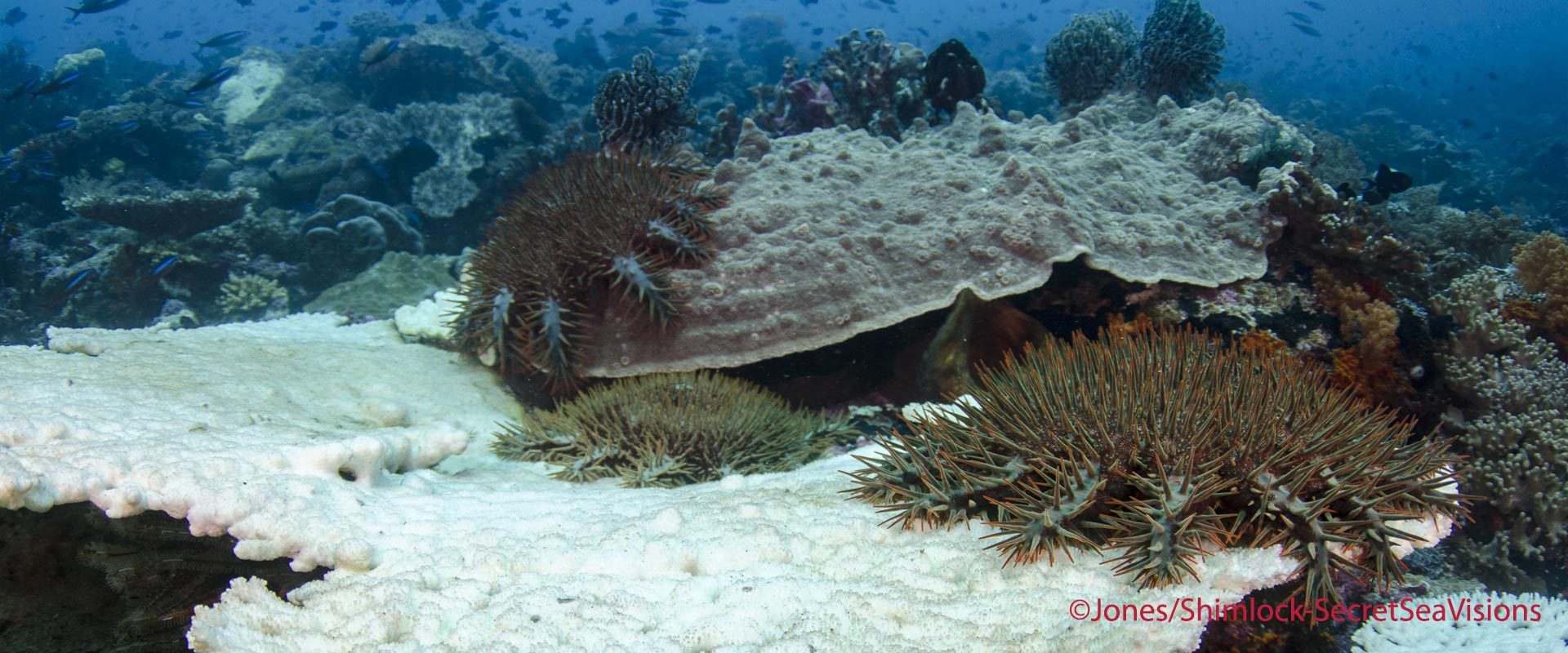Crown of Thorns Seastar (COTS) in Raja Ampat by Dr. Mark Erdmann and Burt Jones
Crown of Thorns Seastar (COTS) in Raja Ampat
by Dr. Mark Erdmann and Burt Jones
Despite being the world’s most bio-diverse marine environment, and arguably being very healthy, the reefs of Raja are not immune to the same problems encountered throughout the tropical world. Recently, and not for the first time, there have been reports of a COTS outbreak on certain reefs in Raja.
We know that many visitors are very concerned, so are the Indonesians! Many are asking what, if anything, is being done to eliminate the problem. In early September, a “stakeholder” seminar was held in Waisai, the capital city of Raja Ampat. The seminar’s goal is to establish a working protocol for dealing with COTS outbreaks.
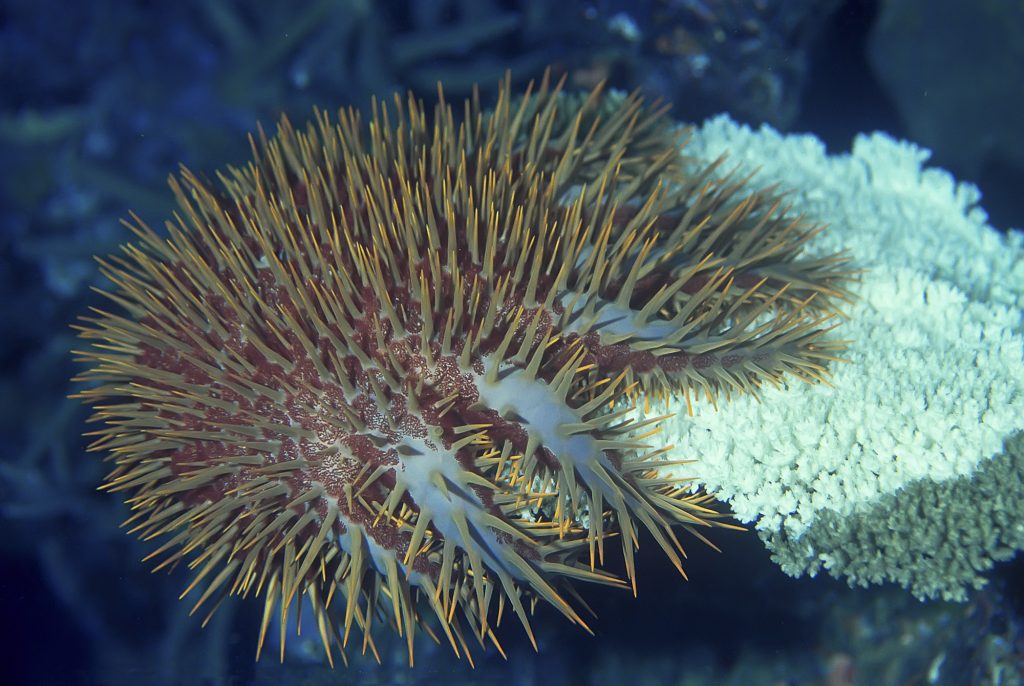
COTS are a natural predator of hard corals. It eats the coral’s polyps and leaves the (white) dead coral skeleton behind. ©Jones/Shimlock-SecretSeaVisions
But first here are the facts:
*COTS are echinoderms related to sea stars, sea urchins, trepang (sea cucumbers)–but with typically 14-21 arms (instead of 5) and poisonous spines!!
*Adults normally 25-40cm (10-15in), but up to 80cm (30in)!
*Significant coral predator –can eat up to a 20cm x 20cm (8in x 8in) patch in a single day!
*Feed by everting their stomach and “digesting” coral polyps then consuming pulp
*Focus predominantly on fast-growing Acroporid corals (tables and branching corals), but eventually will eat any coral
*Naturally present on the reef in numbers of 1-15/hectare (≈1-6/acre)
*In outbreak populations, they can reach up to 15/m2(≈15/yd²)!!
*Adult female can produce up to 65 million eggs in single season –so there is always huge potential for outbreaks (though in general 99.3% of juveniles die within the first 2 years)
*Settle into reef from plankton at .5mm (.01in)
*Stay hidden in rubble/reef matrix feeding on coralline algae until 10mm (.4in) in size (≈6 months)
*From 10mm-20cm (.4-8in), stay cryptic and emerge at night to feed on corals (up to 2-3 yrs of age)
*Above 20cm (8in), they normally feed openly during day on corals
*Natural predators include Triton’s Trumpet, Starry Pufferfish, Harlequin Shrimp, Napoleon Wrasse and Long-nose Emperors/Snapper (mostly on juveniles)
*Nominally Acanthaster plancii-Actually 4 cryptic species (Pacific, Red Sea, Southern Indian Ocean, Northern Indian Ocean)
*Most research to date done on Pacific species (Great Barrier Reef)
Are COTS outbreaks “natural”?
*Big debate in Australia, but now generally accepted that most outbreaks are at least partly human-caused
*With each female producing 65 million eggs in a season, even small increase in survival means MANY more starfish
*Australia’s GBR has suffered 4 major outbreaks since 1960’s, each lasting 4-8 years and with 15-17 years in between
*Believed responsible for reducing overall coral cover of GBR by 42% in last 30 years
*Generally believed to be a result of human activities on Queensland coast causing favorable survival conditions in GBR Lagoon (mostly due to fertilizer inputs/increased freshwater flows due to land clearing/farming)
COTS outbreaks in Indonesia
*First outbreak-1970s from Sumatra (Padang)
*1980s/90s –Pulau Seribu, Anambas, Western Indonesia
*1995-2005 –Sulawesi
*2000’s –Aceh, Anambas, Halmahera
*2005-6: Raja Ampat (Dampier Strait, east Misool)
Why is there a COTS outbreak in Raja now?
*Likely at least in part due to increased human activity:
*Waste water from Waisai, tourism (liveaboards, homestays and resorts) makes the Dampier Strait water more “fertile” with nutrients.
*Agriculture/deforestation increases sedimentation and fresh water run-off
*Overfishing of predators (Napoleon, Emperor, Triton’s Trumpet, etc.)
*Coral degradation (areas of “rubble”) caused by improper anchoring/lack of moorings, stranding of boats/ships, reef “walking” by uniformed tourists, etc.
Will COT destroy Raja?
*NO!! But they can eat a lot of coral and degrade the reefs, particularly in areas with Acropora (plating/branching corals)
*We can probably limit the destruction, but eventually they will either starve or be killed –and then the coral can begin re-growing (much quicker than after bomb fishing or anchoring)
*Outbreaks and damage are likely to be very patchy around Raja. Regions dominated by soft corals (e.g., SE Misool) and rocky reefs (e.g., Kawe/Wayag) are not likely to be strongly affected
What should we do?
*Survey Raja to determine the extent of the outbreak by collecting data from tourism sector and villages with a focus on lagoons and other areas with lots of Acropora.
*Tourist divers and snorkelers should inform the staff of their liveaboard, homestay or resort plus file a report with RAEW (Raja Ampat Environmental Watch) or with
the UPT KKP office in Waisai (Contact person: Siti Nurdjana Sangadji (Nana), ayana.eureka@yahoo.com, (062) 0852-43022825)
*Preform full-scale COTS cleanups now and continue to monitor and cleanup affected areas for 2-3 years
*Encourage your liveaboard, homestay or resort to “adopt a reef” and commit to preforming at least one COTS “clean-up” dive every time you visit.
*Minimize the factors that cause COTS outbreaks:
1. Improve waste management in Waisai, villages and tourism accommodations (liveaboards, homestays, resorts)
2. Control erosion/sedimentation in rivers and coast lines
3. Implement a mooring buoy program, stop damage from improper anchoring, grounding of ships
4. Through the MPA systems, implement controls on the fishing of COTS predators
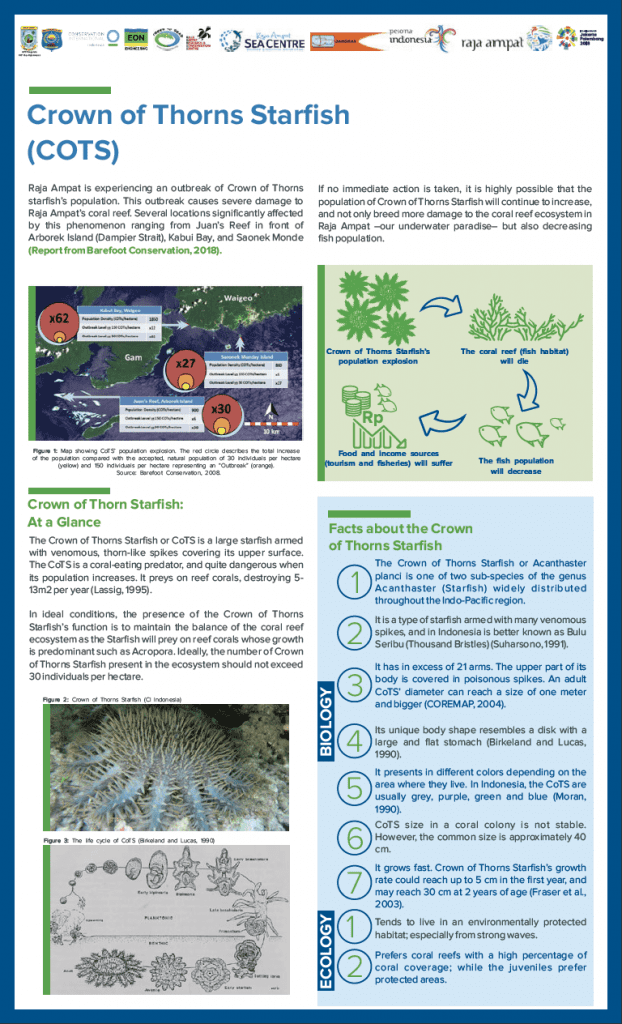
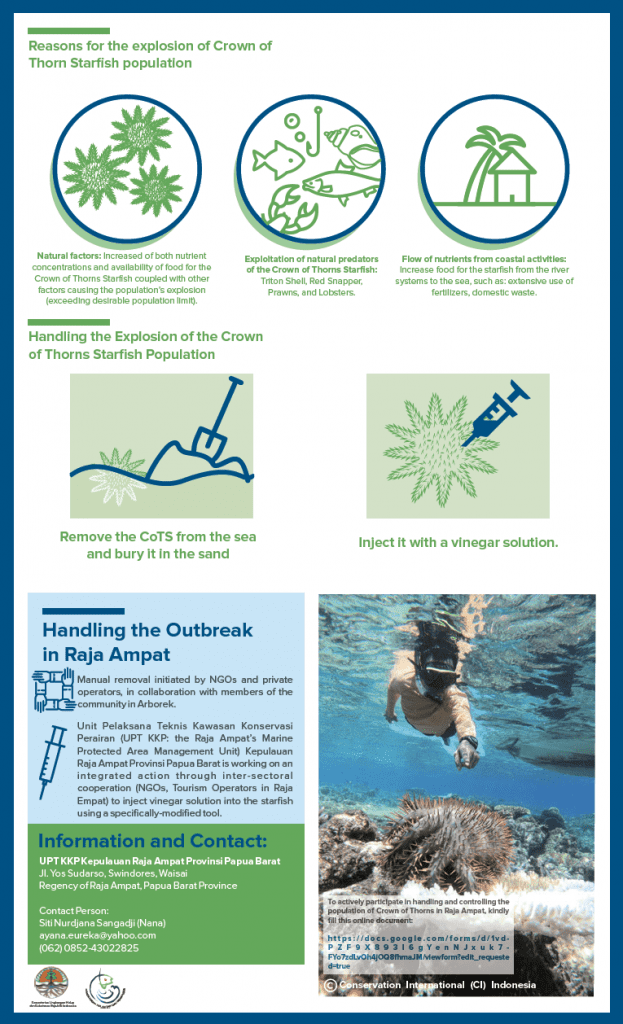
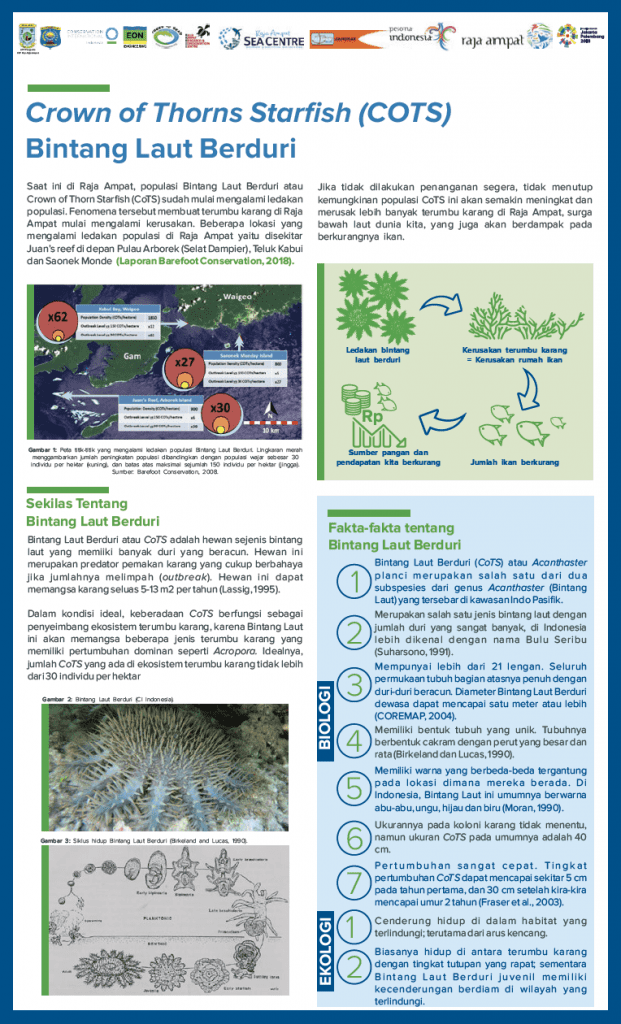
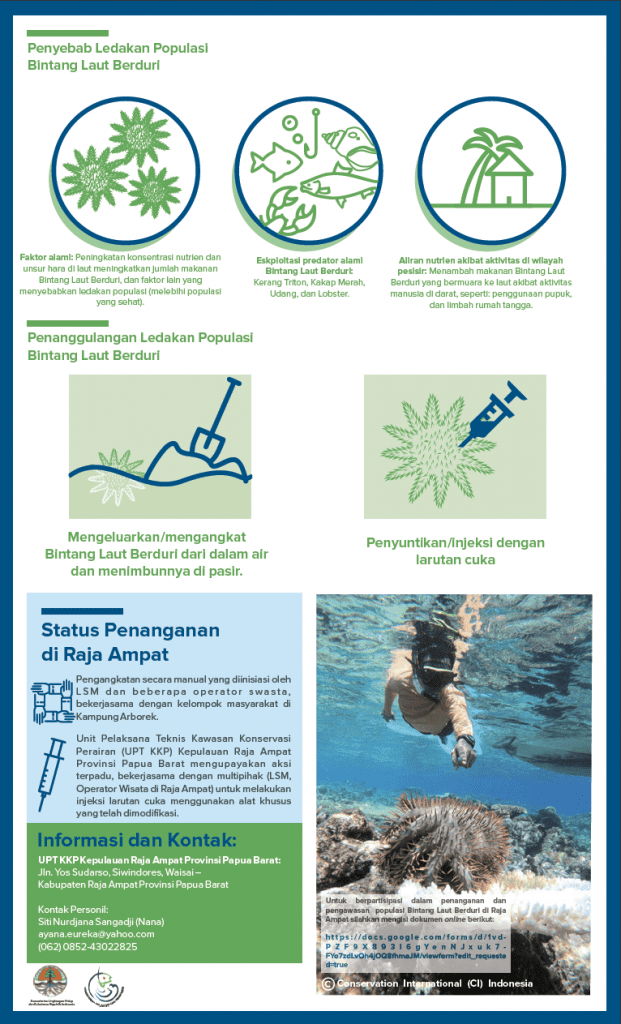
Mark Erdmann is CI’s Vice President for Asia Pacific Marine Programs, now based in Auckland after 23 years in Indonesia.
Burt Jones is the site’s administrator.





































